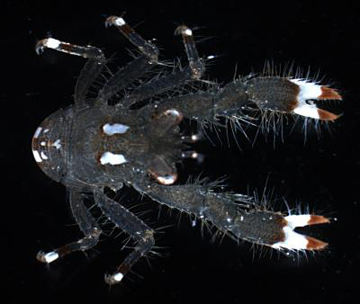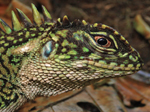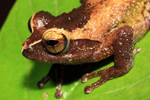In recent journeys to Madagascar, New Caledonia, Vanuatu, the Philippines, and French Polynesia, scientists from the Centre for Advanced Studies of Blanes and the University of Barcelona have discovered not only five new crustaceous species, but also the existence of a new genus in the family.
Through use of molecular data and the form and relationship between structures of the animals, the experts were able to distinguish 5 distinctly new species out of the 6 they encountered. While the species do look quite similar, they are genetically different. The five previously unknown varieties were found to be of the Galatheidae family and Lauriea genus. Individuals of the family of Galatheidae are characterized by extremely long setae, which are stiff hair or bristlelike structures, and legs ending in a double spine.
Also, based on the fact that one of the species possessed characteristics that the nearby species did not, scientists created a new genus Triondonthea. A genus is a category in taxonomy ranked above species, but below family.
 This is one of the five new species found, Lauriea teresae. Photo by: Enrique Marcpherson. |
and co-author of this study explains, very different from the Lauriea species despite being very morphologically similar. The morphological differences are small to our eyes but reflect great inequalities on a species level,” says co-author Enrique Macpherson, a researcher at the Centre for Advanced Studies of Blanes.
He goes on to say, “These species can be found in the Indian and Pacific Oceans but not in the American Pacific. They are generally in shallow water and mostly in areas of coral reef. Some are endemic, as they only live on an archipelago or in a very specific area, whereas others spread from Madagascar to the French Polynese.”
During the expeditions, animals were collected in nets, traps, dredges, and through diving methods. The samples were then divided on the boat or in a lab, and after were sent to experts in each of the taxonomic groups. Macpherson himself specializes in squat lobsters, the group of crustaceans studied.
This study adds to the work of a previous one begun over 20 years ago. This prior study was carried out through French and U.S. expeditions across the entirety of the Indian and Pacific Oceans. Macpherson confirms that, to date, these oceans have been explored up to depths of 5,000 meters.
Related articles
2 ‘giant’ yet tiny mouse lemurs identified in Madagascar
(03/27/2013) Scientists have discovered two new species of mouse lemurs in Madagascar, bringing the total number of diminutive primates known to science to 20.
Scientists discover two new remarkably-colored lizards in the Peruvian Amazon (photos)

(03/21/2013) Scientists have discovered two new species of woodlizards from the Peruvian Amazon. Woodlizards, in the genus Enyalioides, are little-known reptiles with only 10 described species found in South and Central America. Described in a new paper in ZooKeys, both new woodlizards were found in Cordillera Azul National Park, the nations third-largest.
Scientists discover 8 new frogs in one sanctuary, nearly all Critically Endangered (photos)

(03/21/2013) Two surveys in the mountainous forests of Sri Lank’s Peak Wilderness Sanctuary have uncovered eight new species of frogs, according to a massive new paper in the Journal of Threatened Taxa. While every year over a hundred new amphibians are discovered, eight new discoveries in a single park is especially notable. Sri Lanka is an amphibian-lovers paradise with well over 100 described species, most of which are endemic, i.e. found only on the small island country. Unfortunately the country has also seen more frog extinctions than anywhere else, and seven of the eight new species are already thought to be Critically Endangered.
The beautiful amphibian from Hell: scientists discover new crocodile newt in Vietnam (photos)

(03/19/2013) Researchers have discovered a new species of Vietnamese salamander that looks like it was birthed from an abyssal volcano. Found tucked away in Tokyo’s National Museum of Nature and Science, the scientists described the species in the new edition of Current Herpetology. Coal-black with orange-tinted toes, the new crocodile newt (in the genus Tylototriton) was determined to be a new species when it showed morphological and genetic differences from near relatives. Despite its remarkable appearance, the researchers say these are typical colors for crocodile newts.
Two new species of mini-salamander discovered in Colombia
(02/28/2013) Biologists have discovered two new species of salamander in Tamá National Natural Park in Colombia. While the discovery should be cause for celebration, the news was dampened by the fact that both species are already infected with the deadly fungal disease, known as Batrachochytrium dendrobatidis (Bd), which has wiped out amphibian populations worldwide. Both of the new salamanders belong to the genus Bolitoglossa, which are web-footed salamanders found in the tropical Americas.